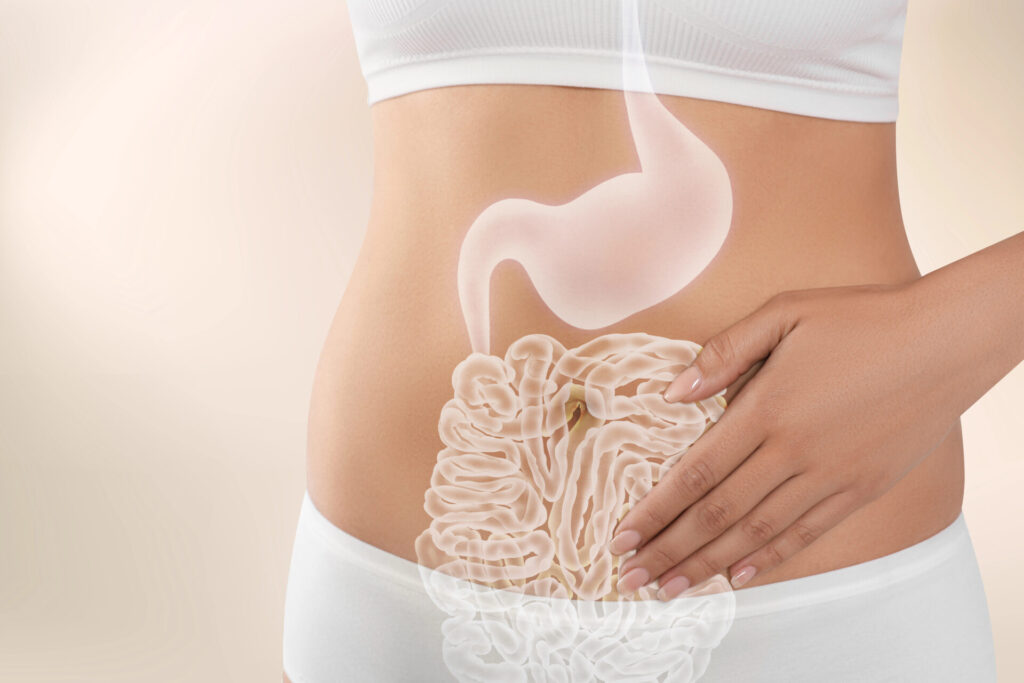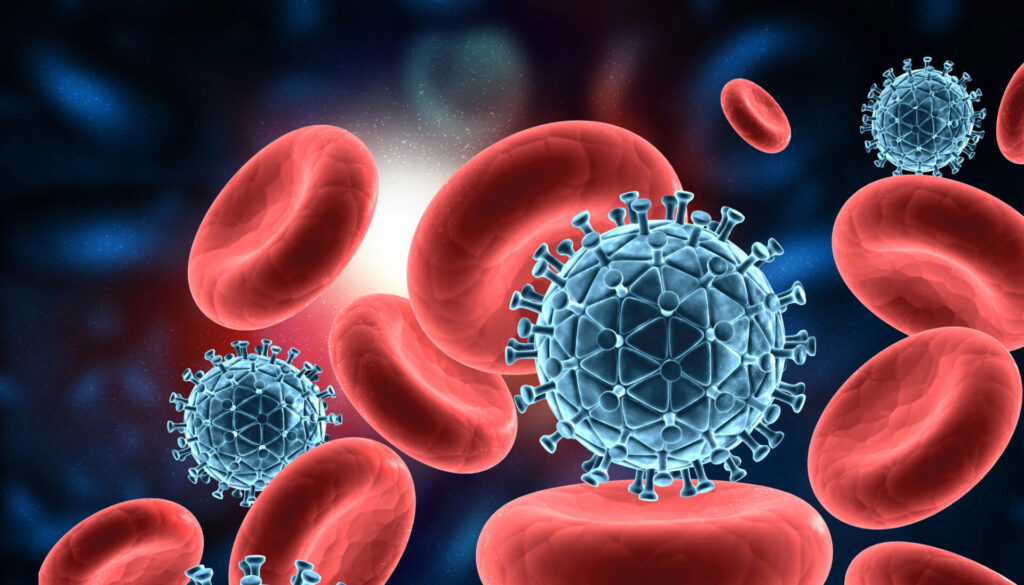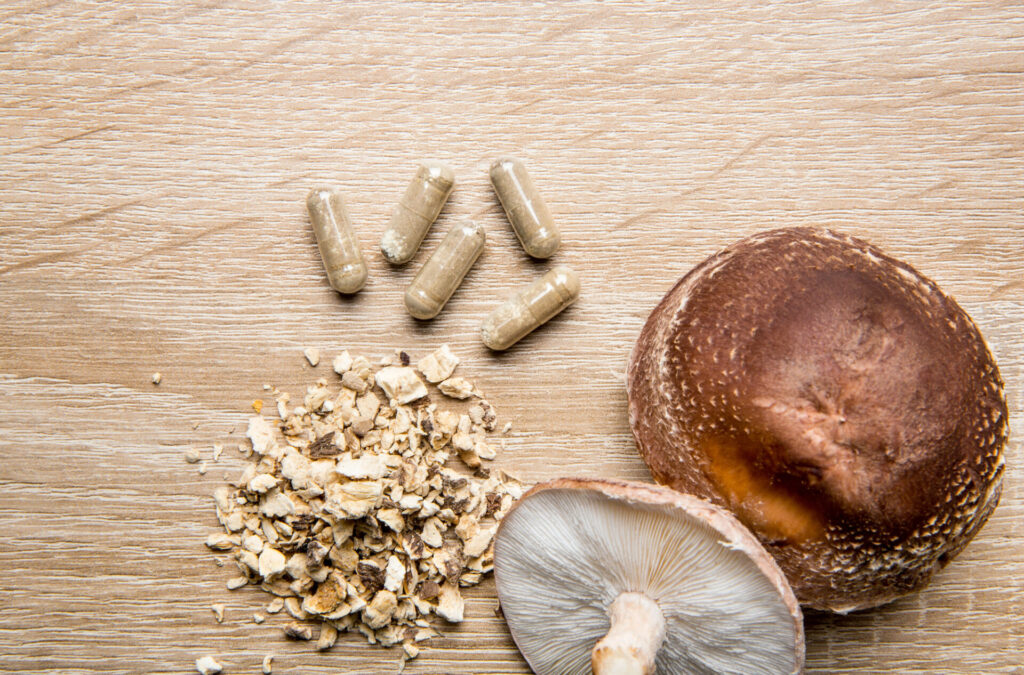The statements mentioned in this content have not been evaluated by the FDA, and are not intended to prevent, diagnose, or treat any disease. Always work with your personal healthcare provider.
Gastrointestinal problems like inflammatory bowel disease, gastroesophageal reflux disease (GERD), abdominal pain caused by stress, constipation, and diarrhea are all too common and plague many people. Colorectal cancer is also a concern. Worldwide, it’s the fourth most deadly cancer leading to nearly 900,000 deaths per year.1
Although talking about GI health isn’t the most glamorous of topics, it’s one of the most necessary aspects of your health. Suppose your GI tract isn’t working right. In that case, you can develop problems that seriously interfere with your day-to-day well-being such as diarrhea, constipation, and abdominal pain, to name a few GI-related problems. Surprisingly, there’s also a relationship between intestinal problems and obesity. Intestinal health is even linked to mood and happiness, thanks to inhabitants of the intestines known collectively as the microbiota. This is what’s referred to as the gut-brain axis. The link between the gut and the brain can impact mental health and brain function. I’ll be discussing more about all of these issues—and how the endocannabinoid system is involved—throughout this chapter.
The Endocannabinoid System and The GI Tract
The endocannabinoid system may have an impressive part to play in supporting the health of the GI tract and keeping the gut-brain axis healthy. Endocannabinoids are involved in protecting against increased intestinal permeability (leaky gut).2,3 Anandamide is considered a “gate opener,” which means it can promote leaky gut.2 However, palmitoylethanolamine and 2‐oleoylglycerol are “gatekeepers,” in other words preventing substances like undigested food or harmful substances such as lipopolysaccharide (LPS) from escaping the intestines into the systemic circulation.2,3 From chapter 1, you might remember that PEA is not technically an endocannabinoid, but it works on the endocannabinoid system by helping the body make better use of the endocannabinoid anandamide (AEA).
Researchers have found other links between the gut and the endocannabinoid system. Modifying the gut microbiota by administering prebiotics or antibiotics altered the expression of the CB1 receptor.3 The CB1—cannabinoid 1—receptor, as you likely recall from earlier in this book, is like a lock that fits certain “keys,” including Cannabis sativa. The gut microbiota can also boost the actions of fatty acid amide hydrolase (FAAH) and monoacylglycerol lipase (MAGL).3 As I discussed earlier in the book, FAAH and MAGL are enzymes that break down the endocannabinoids AEA and 2-arachidonoylglycerol (2-AG).
Is An Impaired Endocannabinoid System Making People Fat?
The answer to this question is likely yes. A microbiota that’s associated with obesity is linked to a higher level of intestinal anandamide.3 Higher amounts of this endocannabinoid are associated with increased gut permeability—in other words, leaky gut.3
To further prove the link between obesity, gut microbiota, and the endocannabinoid system, researchers administered to mice a bacterium called Akkermansia muciniphila.4 Giving the mice this bacterium reversed obesity by increasing intestinal levels of endocannabinoids that reduce inflammation, support the gut barrier, and improve gut peptide secretion.
It works the opposite way as well. By this, I mean that not only can the microbiota influence endocannabinoids, but endocannabinoids from fat tissue can also control the composition of the gut microbiota.5 For example, blocking an enzyme that synthesizes endocannabinoids in fat tissue leads to obesity, glucose intolerance, altered fat metabolism, and inflammation in fat tissue.6 These changes were associated with a corresponding alteration in gut microbiota composition.
CBD and the Gut-Brain Axis
Cannabidiol influences both the microbiota and the endocannabinoid system through its effects on digestive, immune, and central nervous system function.7 Consequently, it may work through the microbiota-gut-brain axis. In fact, researchers believe that it is CBD’s effects on this gut-brain axis that are responsible for its beneficial effects in alcoholics.7 Alcohol causes immune problems including chronic systemic inflammation in the brain and surrounding areas in addition to disturbances in the gut microbiota and leaky gut. These damaging effects of alcohol abuse are linked to alcoholic symptoms such as alcohol craving and problems with cognitive control.7 CBD, on the other hand, boosts gastrointestinal and immune system health by reducing intestinal permeability, influencing gut bacteria, and soothing inflammation.7
Cannabinoids Soothe Inflammation in the Colon
The endocannbinoid system and what’s known as the endocannabinoidome regulate inflammation in the intestines. The endocannabinoidome is a term coined by Vincenzo Di Marzo, a scientist who has extensively studied endocannabinoids.8 The endocannabinoidome is basically an expanded endocannabinoid system.8 It includes not only the endocannabinoids and enzymes responsible for their breakdown, but also mediators belonging to the same chemical class as the endocannabinoids such as amides or esters of long-chain fatty acids.8 These mediators included in the endocannabinoidome are not necessarily related to the endocannabinoids anandamide and 2-AG. Unlike anandamide and 2-AG, these mediators do not act on the receptors CB1 and CB2. The endocannabinoidome is a very complicated system. It includes more than a hundred fatty-acid-derived mediators and more than 50 receptors and enzymes involved in the production or breakdown of lipids.
Due to their role in regulating inflammation in the intestines, the endocannabinoid system and the endocannabinoidome are involved in reducing inflammatory bowel disease (IBD). Endocannabinoids help direct immune cells to the sites of intestinal inflammation.9,10 CBD’s role in reducing inflammation provides more evidence the endocannabinoid system and the endocannabinoidome are involved in suppressing IBD. Cannabidiol blocks the production of proinflammatory cytokines such as TNF-α and IFN-γ and soothes intestinal inflammation.11,12
Research confirms this anti-inflammatory effect in humans. In a 10-week study, researchers gave patients with ulcerative colitis a CBD-rich botanical extract.13 The percentage of patients in remission after treatment was similar between the placebo and CBD group. However, when the study authors looked at illness severity, global impression of change, and patient-reported quality-of-life, all of these outcomes improved in the CBD group. What’s more, the patients taking the placebo suffered more gastrointestinal-related adverse effects. In another study using human colon cells taken from ulcerative colitis patients, CBD lowered inflammation and suppressed intestinal damage.12 According to the researchers, “Our results therefore indicate that CBD indeed unravels a new therapeutic strategy to treat inflammatory bowel diseases.”
Other evidence points to the endocannabinoid system, CBD, and the endocannabinoidome as reducing intestinal inflammation. This evidence includes:
- CB2-receptor expression is increased in tissue from humans with IBD.14This impacts immunity of the mucosal lining in the inflamed colon. The CB2 receptors act together with the CB1 receptors in the lining of the colon. This leads to healing of the intestinal walls.
- CB1 receptors are involved in gut health. We know this to be true because diarrhea occurs more often in people given substances that block these receptors.15
- Rodent studies show that blocking FAAH, the enzyme involved in breaking down anandamide, leads to a rise in anandamide levels and stops colitis development.16,17In addition, blocking FAAH and the inflammatory enzyme cyclooxygenase (COX) in mice with colitis makes the disease less severe.18 These improvements were accompanied by a rise in anandamide levels and changes in the CB1 receptor.
- Blocking FAAH and COX is also linked to higher levels of PEA and oleoylethanolamide.18PEA levels are 1.8-fold higher in intestinal tissue from ulcerative colitis patients compared with healthy controls.19 This is likely because PEA is healing the inflammation. PEA is highly anti-inflammatory, blocks the production of inflammatory cytokines, and reduces colitis in mice.20
- The phytocannabinoids CBD, THC, and cannabigerol (CBG) reduced intestinal inflammation in animal studies.21,22Although THC was the most effective in rats with colitis, CBD made an ineffective THC dose more effective to the point where combining CBD and a lower dose of THC was just as effective as a higher THC-only dose.21 CBG has also suppressed colitis in mice and blocked the synthesis of reactive oxygen species in intestinal epithelial cells.22
- Genetics also play a role in the endocannabinoid-gut link. There’s a relationship between variants in the gene encoding CB1 receptors and irritable bowel syndrome.23
In addition, variants of the CB1 receptor gene (CNR1) and FAAH genes occur in people with diarrhea-predominant and alternating forms of IBS.24 25 There’s also a strong link between a polymorphism in the CNR1 gene and IBS symptoms, colonic transit in IBS with diarrhea, and intestinal gas.24 However, pain was not associated with this polymorphism. Other scientists found that CNR1 mutations are linked to developing IBS symptoms.25,26
Impaired Gut Motility: When Things Move Too Slow or Too Fast
Research shows that endocannabinoids and CBD influence gut motility. This refers to the time it takes for food to move through the intestines. Slow gut motility is known as constipation. On the other hand, when gut motility speeds up too much, it can lead to diarrhea. There are a number of studies that show the endocannabinoid system oversees gut motility. For example, when scientists fed obese mice high-fat diets, the endocannabinoid system in the animals’ guts changed.27 This led to an increase in gut motility. In another study, this one a mouse model of constipation, researchers reduced the activity of diacylglycerol lipase (DGL), the enzyme which makes the endocannabinoid 2-AG.28 Blocking DGL improved gut motility.
Other studies show that by activating the CB1 receptor, peristalsis and gastrointestinal contraction—processes that move food through the intestines—are suppressed. THC, the component of marijuana that makes you high, activates the CB1 receptor.29,30 However, CBD doesn’t activate this receptor. This means it’s less likely to produce constipation and may even normalize bowel movements.31 In fact, a mouse study of sepsis showed that CBD reduced gut motility in the animals with sepsis but had no effect on the motility of normal mice.31
CBD also governs the activity of the FAAH enzyme, which impacts gut motility by interacting with the endocannabinoid anandamide.31
Stress-Related Stomach Pain
The endocannabinoid system may come to the rescue of people who have abdominal pain caused by chronic stress. In fact, changes to the endocannabinoid system may explain why chronic stress is linked to IBD/IBS.15,32 In studying rodents, scientists have found that stress during early life changes the endocannabinoid system.33 This, in turn, makes the animals more likely to develop IBS. In addition, chronic stress lowers levels of anandamide while raising 2-AG in the brain and reducing the activity of CB1 receptors in enlargements along peripheral nerves known as sensory ganglia. This in turn regulates visceral pain.34
Epigenetics are also involved in this endocannabinoid-abdominal pain connection. Epigenetics involves changes to gene expression that occur in ways other than the genetic code. Epigenetic changes happen because of lifestyle or environmental factors. When a person is chronically stressed, their CB1 receptor activity is altered through epigenetic pathways.35 This may be the reason why stress can cause abdominal pain.35 In a way that involves epigenetics, chronic stress impacts the CB1 gene promoter.3 This causes a fall in CB1 levels in sensory neurons in the colon and other pelvic organs.
Does CBD Have a Role to Play in GERD?
Swallowed food passes into the stomach thanks to the lower esophageal sphincter, known as the LES for short. The LES also stops the regurgitation of gastric contents back into the esophagus. The endocannabinoid system is involved in the mechanisms regulating LES relaxation.36 Working through the CB1 receptor, cannabinoids stop LES relaxation.36 Too much relaxation of the LES causes gastroesophageal reflux disease (GERD). There are other ways besides preventing LES relaxation in which cannabinoids may reduce GERD. These include reducing gastric acid secretion and microvascular leakage and bronchoconstriction, which are associated with reflux.36 Cannabinoids can also reduce pain linked to esophageal hypersensitivity.36
Studies on cannabinoids and GERD have focused on THC or synthetic cannabinoids.37 Unfortunately, there isn’t any research on CBD and GERD. However, based on the promising results using THC or synthetic cannabinoids, it would be interesting to explore CBD’s effects in clinical studies.
Anti-Nausea Actions
In research using rodents, scientists have found CBD can reduce an upset stomach. In one of those studies, researchers injected CBD into rats and found it reduced nausea and vomiting.38 It accomplished this by working through serotonin receptors.
Colon Cancer and Cannabinoids
In cancer, including colorectal cancer, the regulation of endocannabinoid production is altered.39 Expression of endocannabinoid receptors is also changed.39 In primary tumor tissue from people whose colorectal cancer metastasized, the expression of CB1 receptors is weakened.39 This weakened activity of the CB1 receptor speeds up the growth of intestinal tumors.40 In addition, mice without a CB1 receptor suffer from more severe inflammation in the colon.40 This suggests this cannabinoid receptor protects against tissue inflammation in the colon.16 Tissue inflammation can lead to cancerous changes in colon tissue and blocking the inflammation can stop the malignant changes.40 16 On the other hand, increasing CB1 receptor expression stops the proliferation of colon cancer cell lines.39,41,42
This link between CB1 receptor activity and colon health provides evidence that the endocannabinoid system is involved in suppressing colorectal cancer. What’s more, both endocannabinoids and phytocannabinoids reduced colon cancer development in rodents. Studies using CBD or a Cannabis sativa extract with high CBD content blocked the development of aberrant crypt foci, polyps, and tumors in the colon of mice.43 44 In colorectal cancer cell lines, CBD also stopped cell proliferation.43 Furthermore, CBD suppresses the activity of the G-protein coupled receptor 55 (GPR55).45 GPR55 promotes metastasis of colon cancer and CBD’s ability to weaken its actions may keep the colon healthy.45
To sum up, the endocannbinoid system, the broader endocannabinoidome, and phytocannabinoids like CBD can keep the GI tract healthy. I’ve found in my clinical practice that CBD supports colon health in my patients that need this kind of support the most.
References:
- Dekker E, Tanis PJ, Vleugels JLA, Kasi PM, Wallace MB. Colorectal cancer. 2019;394(10207):1467-1480.
- Cani PD, Plovier H, Van Hul M, et al. Endocannabinoids–at the crossroads between the gut microbiota and host metabolism. Nat Rev Endocrinol. 2016;12(3):133-143.
- Muccioli GG, Naslain D, Bäckhed F, et al. The endocannabinoid system links gut microbiota to adipogenesis. Mol Syst Biol. 2010;6:392.
- Everard A, Belzer C, Geurts L, et al. Cross-talk between Akkermansia muciniphila and intestinal epithelium controls diet-induced obesity. Proc Natl Acad Sci U S A. 2013;110(22):9066-9071.
- Rastelli M, Knauf C, Cani PD. Gut Microbes and Health: A Focus on the Mechanisms Linking Microbes, Obesity, and Related Disorders. Obesity (Silver Spring). 2018;26(5):792-800.
- Geurts L, Everard A, Van Hul M, et al. Adipose tissue NAPE-PLD controls fat mass development by altering the browning process and gut microbiota. Nat Commun. 2015;6:6495.
- Karoly HC, Mueller RL, Bidwell LC, Hutchison KE. Cannabinoids and the Microbiota-Gut-Brain Axis: Emerging Effects of Cannabidiol and Potential Applications to Alcohol Use Disorders. Alcohol Clin Exp Res. 2020;44(2):340-353.
- Di Marzo V, Piscitelli F. The Endocannabinoid System and its Modulation by Phytocannabinoids. 2015;12(4):692-698.
- Alhouayek M, Lambert DM, Delzenne NM, Cani PD, Muccioli GG. Increasing endogenous 2-arachidonoylglycerol levels counteracts colitis and related systemic inflammation. Faseb j. 2011;25(8):2711-2721.
- Schicho R, Bashashati M, Bawa M, et al. The atypical cannabinoid O-1602 protects against experimental colitis and inhibits neutrophil recruitment. Inflamm Bowel Dis. 2011;17(8):1651-1664.
- Borrelli F, Aviello G, Romano B, et al. Cannabidiol, a safe and non-psychotropic ingredient of the marijuana plant Cannabis sativa, is protective in a murine model of colitis. J Mol Med (Berl). 2009;87(11):1111-1121.
- De Filippis D, Esposito G, Cirillo C, et al. Cannabidiol reduces intestinal inflammation through the control of neuroimmune axis. PLoS One. 2011;6(12):e28159.
- Irving PM, Iqbal T, Nwokolo C, et al. A Randomized, Double-blind, Placebo-controlled, Parallel-group, Pilot Study of Cannabidiol-rich Botanical Extract in the Symptomatic Treatment of Ulcerative Colitis. Inflamm Bowel Dis. 2018;24(4):714-724.
- Wright K, Rooney N, Feeney M, et al. Differential expression of cannabinoid receptors in the human colon: cannabinoids promote epithelial wound healing. 2005;129(2):437-453.
- Izzo AA, Sharkey KA. Cannabinoids and the gut: new developments and emerging concepts. Pharmacol Ther. 2010;126(1):21-38.
- Massa F, Marsicano G, Hermann H, et al. The endogenous cannabinoid system protects against colonic inflammation. J Clin Invest. 2004;113(8):1202-1209.
- Storr MA, Keenan CM, Emmerdinger D, et al. Targeting endocannabinoid degradation protects against experimental colitis in mice: involvement of CB1 and CB2 receptors. J Mol Med (Berl). 2008;86(8):925-936.
- Sasso O, Migliore M, Habrant D, et al. Multitarget fatty acid amide hydrolase/cyclooxygenase blockade suppresses intestinal inflammation and protects against nonsteroidal anti-inflammatory drug-dependent gastrointestinal damage. Faseb j. 2015;29(6):2616-2627.
- Darmani NA, Izzo AA, Degenhardt B, et al. Involvement of the cannabimimetic compound, N-palmitoyl-ethanolamine, in inflammatory and neuropathic conditions: review of the available pre-clinical data, and first human studies. 2005;48(8):1154-1163.
- Borrelli F, Romano B, Petrosino S, et al. Palmitoylethanolamide, a naturally occurring lipid, is an orally effective intestinal anti-inflammatory agent. Br J Pharmacol. 2015;172(1):142-158.
- Jamontt JM, Molleman A, Pertwee RG, Parsons ME. The effects of Delta-tetrahydrocannabinol and cannabidiol alone and in combination on damage, inflammation and in vitro motility disturbances in rat colitis. Br J Pharmacol. 2010;160(3):712-723.
- Borrelli F, Fasolino I, Romano B, et al. Beneficial effect of the non-psychotropic plant cannabinoid cannabigerol on experimental inflammatory bowel disease. Biochem Pharmacol. 2013;85(9):1306-1316.
- Sharkey KA, Wiley JW. The Role of the Endocannabinoid System in the Brain-Gut Axis. 2016;151(2):252-266.
- Camilleri M, Kolar GJ, Vazquez-Roque MI, Carlson P, Burton DD, Zinsmeister AR. Cannabinoid receptor 1 gene and irritable bowel syndrome: phenotype and quantitative traits. Am J Physiol Gastrointest Liver Physiol. 2013;304(5):G553-560.
- Park JM, Choi MG, Cho YK, et al. Cannabinoid receptor 1 gene polymorphism and irritable bowel syndrome in the Korean population: a hypothesis-generating study. J Clin Gastroenterol. 2011;45(1):45-49.
- Jiang Y, Nie Y, Li Y, Zhang L. Association of cannabinoid type 1 receptor and fatty acid amide hydrolase genetic polymorphisms in Chinese patients with irritable bowel syndrome. J Gastroenterol Hepatol. 2014;29(6):1186-1191.
- Izzo AA, Piscitelli F, Capasso R, et al. Peripheral endocannabinoid dysregulation in obesity: relation to intestinal motility and energy processing induced by food deprivation and re-feeding. Br J Pharmacol. 2009;158(2):451-461.
- Bashashati M, Nasser Y, Keenan CM, et al. Inhibiting endocannabinoid biosynthesis: a novel approach to the treatment of constipation. Br J Pharmacol. 2015;172(12):3099-3111.
- Márquez L, Abanades S, Andreu M. [Endocannabinoid system and bowel inflammation]. Med Clin (Barc). 2008;131(13):513-517.
- Krowicki ZK, Moerschbaecher JM, Winsauer PJ, Digavalli SV, Hornby PJ. Delta9-tetrahydrocannabinol inhibits gastric motility in the rat through cannabinoid CB1 receptors. Eur J Pharmacol. 1999;371(2-3):187-196.
- de Filippis D, Iuvone T, d’amico A, et al. Effect of cannabidiol on sepsis-induced motility disturbances in mice: involvement of CB receptors and fatty acid amide hydrolase. Neurogastroenterol Motil. 2008;20(8):919-927.
- Storr MA, Sharkey KA. The endocannabinoid system and gut-brain signalling. Curr Opin Pharmacol. 2007;7(6):575-582.
- Marco EM, Echeverry-Alzate V, López-Moreno JA, Giné E, Peñasco S, Viveros MP. Consequences of early life stress on the expression of endocannabinoid-related genes in the rat brain. Behav Pharmacol. 2014;25(5-6):547-556.
- Morena M, Patel S, Bains JS, Hill MN. Neurobiological Interactions Between Stress and the Endocannabinoid System. 2016;41(1):80-102.
- Hong S, Zheng G, Wiley JW. Epigenetic regulation of genes that modulate chronic stress-induced visceral pain in the peripheral nervous system. 2015;148(1):148-157.e147.
- Gotfried J, Kataria R, Schey R. Review: The Role of Cannabinoids on Esophageal Function-What We Know Thus Far. Cannabis Cannabinoid Res. 2017;2(1):252-258.
- Martínez V, Iriondo De-Hond A, Borrelli F, Capasso R, Del Castillo MD, Abalo R. Cannabidiol and Other Non-Psychoactive Cannabinoids for Prevention and Treatment of Gastrointestinal Disorders: Useful Nutraceuticals? Int J Mol Sci. 2020;21(9).
- Rock EM, Sullivan MT, Collins SA, et al. Evaluation of repeated or acute treatment with cannabidiol (CBD), cannabidiolic acid (CBDA) or CBDA methyl ester (HU-580) on nausea and/or vomiting in rats and shrews. Psychopharmacology (Berl). 2020;237(9):2621-2631.
- Tutino V, Caruso MG, De Nunzio V, et al. Down-Regulation of Cannabinoid Type 1 (CB1) Receptor and its Downstream Signaling Pathways in Metastatic Colorectal Cancer. Cancers (Basel). 2019;11(5).
- Wang D, Wang H, Ning W, Backlund MG, Dey SK, DuBois RN. Loss of cannabinoid receptor 1 accelerates intestinal tumor growth. Cancer Res. 2008;68(15):6468-6476.
- Refolo MG, D’Alessandro R, Malerba N, et al. Anti Proliferative and Pro Apoptotic Effects of Flavonoid Quercetin Are Mediated by CB1 Receptor in Human Colon Cancer Cell Lines. J Cell Physiol. 2015;230(12):2973-2980.
- Linsalata M, Notarnicola M, Tutino V, et al. Effects of anandamide on polyamine levels and cell growth in human colon cancer cells. Anticancer Res. 2010;30(7):2583-2589.
- Aviello G, Romano B, Borrelli F, et al. Chemopreventive effect of the non-psychotropic phytocannabinoid cannabidiol on experimental colon cancer. J Mol Med (Berl). 2012;90(8):925-934.
- Romano B, Borrelli F, Pagano E, Cascio MG, Pertwee RG, Izzo AA. Inhibition of colon carcinogenesis by a standardized Cannabis sativa extract with high content of cannabidiol. 2014;21(5):631-639.
- Kargl J, Andersen L, Hasenöhrl C, et al. GPR55 promotes migration and adhesion of colon cancer cells indicating a role in metastasis. Br J Pharmacol. 2016;173(1):142-154.







